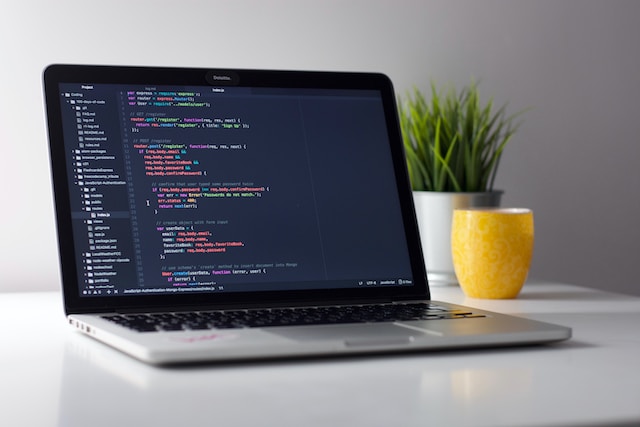Introduction
Discovering that your website has been hacked strive enterprise can be a daunting experience, but it’s crucial to act swiftly and decisively to mitigate damage and restore your online presence. Here’s a step-by-step guide on what to do if your website falls victim to a cyber-attack.
Take Your Hacked Website Offline:
The moment you suspect or confirm a breach, take your website offline immediately. This step is crucial to prevent further damage and protect your visitors from potential security threats originating from your compromised site.
Restore from a Clean Backup:
If you have regular backups of your website, restore it from a version that you are certain is clean and free from malware. Ensure that the backup is from a time before the security breach occurred. This step effectively rolls back your website to a state before the hack, eliminating the compromised code.
Scan for Malware:
After restoring your website, conduct a thorough malware scan to identify any remaining malicious code or scripts. Utilize reliable security plugins or third-party scanning tools to perform a comprehensive scan of your website files and database.
Update All Passwords Hacked Website:
Change all passwords associated with your website, including those for your hosting account, content management system (CMS), FTP, and any plugins or themes you use. Create strong, unique passwords for each account to minimize the risk of future breaches.
Strengthen Security Measures:
Review and enhance your website’s security measures to prevent future attacks. This may include implementing a web application firewall (WAF), enabling two-factor authentication, and regularly updating your website software, plugins, and themes. Regular security audits and vulnerability assessments are essential to identify and address potential weaknesses.
Consider Professional Assistance:
If you’re unsure about the extent of the damage or lack the technical expertise to clean up your website effectively, consider hiring a professional cybersecurity expert or a specialized website security service. These professionals have the knowledge and tools to conduct a thorough security audit, remove malware, and fortify your website against future attacks.
Improving Website Loading Speed: Enhancing User Experience and SEO
In today’s fast-paced digital world, website loading speed is a critical factor that can significantly impact user experience, search engine rankings, and overall online success. Here are effective strategies to optimize your website’s loading speed and provide visitors with a seamless browsing experience.
Optimize Images: Large,
high-resolution images can significantly slow down your website. Use image optimization tools to compress images without compromising quality. Consider using responsive images that adjust their size based on the user’s device, ensuring faster loading times on both desktop and mobile platforms.
Enable Browser Caching:
Browser caching allows frequently accessed resources, such as images, style sheets, and scripts, to be stored in a visitor’s browser. When a user revisits your website, these resources are loaded from the cache instead of being fetched from the server, reducing loading times for subsequent visits.
Minify CSS and JavaScript Files:
Minification is the process of removing unnecessary spaces, line breaks, and comments from CSS and JavaScript files. Smaller file sizes lead to quicker loading times. Numerous online tools and plugins can automate the minification process, simplifying the optimization of your website’s code.
Utilize a Content Delivery Network (CDN):
A Content Delivery Network (CDN) distributes your website’s static resources across multiple servers located worldwide. When a visitor accesses your website, the CDN serves these resources from the server geographically closest to them. This reduces latency and accelerates loading speed, especially for international visitors.
Choose a Reliable Web Hosting Provider:
The choice of a web hosting provider significantly affects your website’s speed and performance. Opt for a reputable hosting company that offers high-performance servers, efficient resource allocation, and excellent technical support. Shared hosting may be cost-effective, but consider upgrading to a dedicated or VPS (Virtual Private Server) hosting plan for improved loading speed and reliability.
Regular Monitoring and Optimization:
Website optimization is an ongoing process. Regularly monitor your website’s speed using online tools like Google PageSpeed Insights or GTmetrix. These tools provide insights into specific areas that require improvement. Address these issues promptly, keeping your website consistently optimized for optimal performance.
Conclusion
In conclusion, responding to a hacked website requires immediate action, including taking the site offline, restoring from a clean backup, scanning for marketing company las vegas malware, updating passwords, and strengthening security measures. For loading speed, optimization strategies such as image compression, browser caching, code minification, CDN utilization, and choosing a reliable web hosting provider can significantly enhance user experience and improve your website’s SEO performance. By proactively addressing these aspects, you can ensure a secure, fast, and reliable online presence, fostering trust and engagement among your visitors.
You may also like
-
ECommerce Website Development Services That Grow Your Brand
-
Best Website Development Company in United States – WordPress Support
-
Seek Online Success with A Domain for Your Website
-
Exploring the Elegance and Durability of China PVC Panels and Ceiling Panels
-
Seek Business Growth with an eCommerce Website

